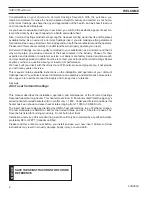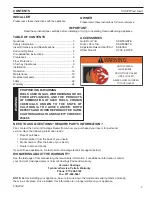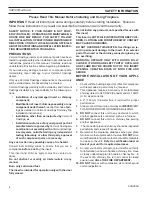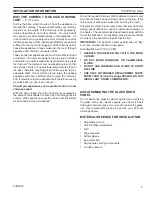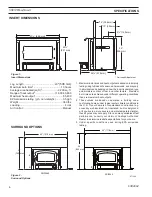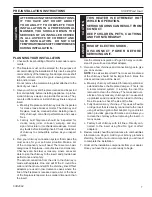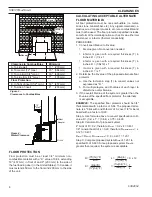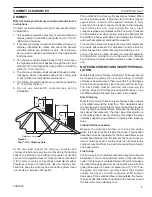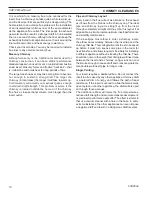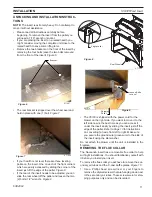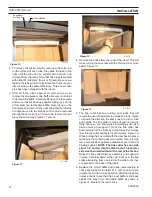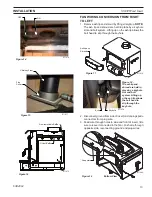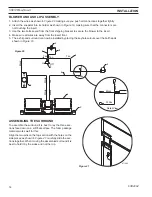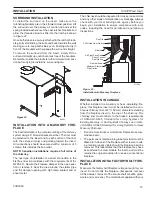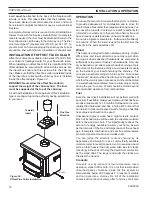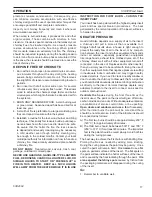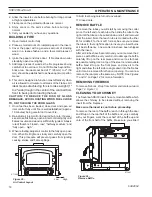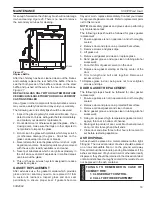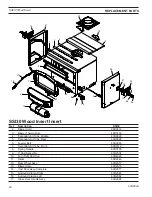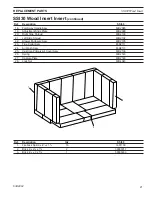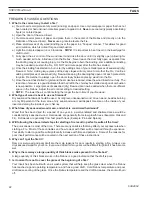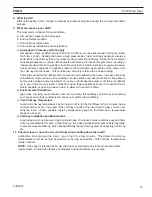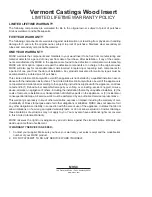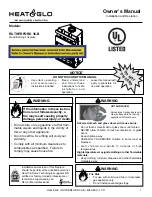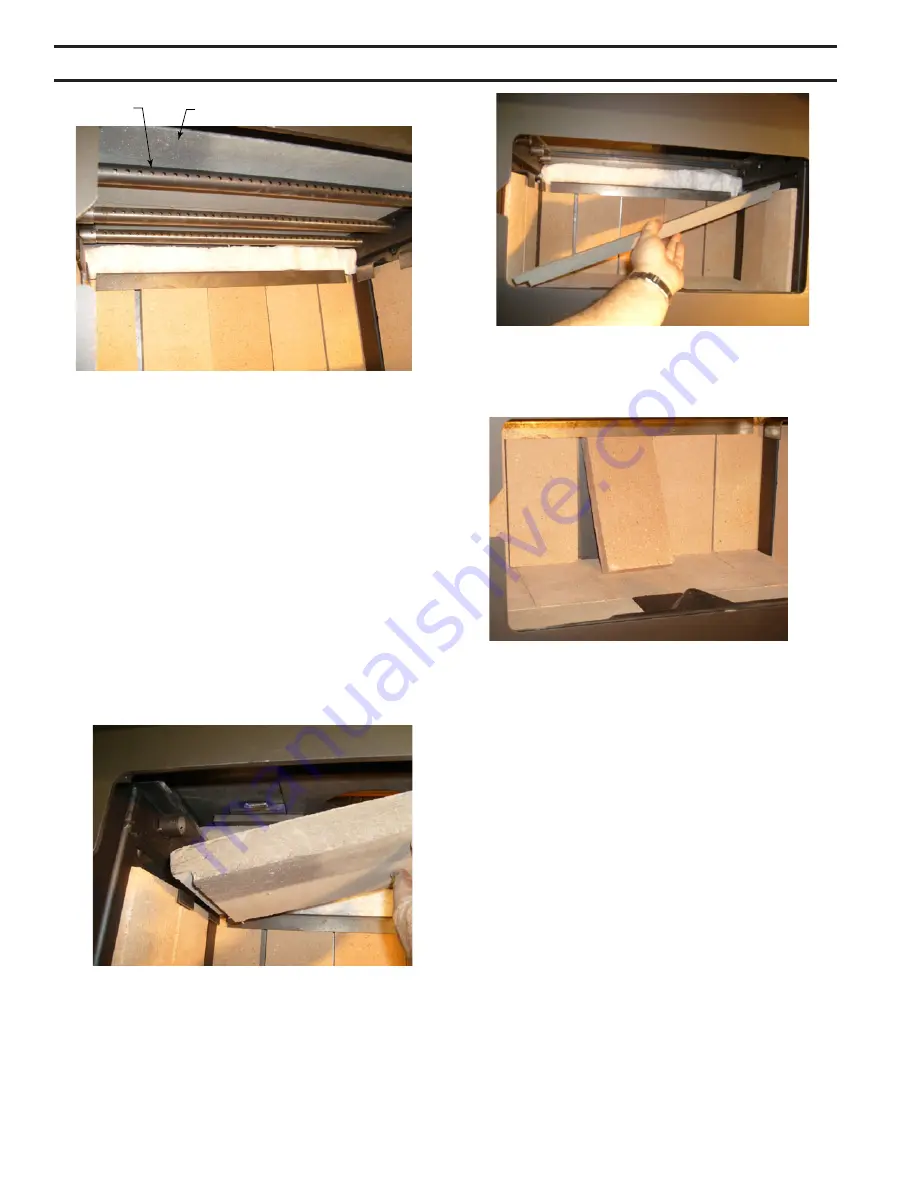
SSI30 Wood Insert
12
63D4004
INSTAllATION
2. To remove the tubes, start by removing the cotter pin
on the left end of each tube, then slide the tube to the
right until the tube can be pulled down and left, and
removed from the insert. Note that each tube is marked
with either M (middle) F (front) or R (rear). Be sure you
replace the tubes in their correct location to ensure your
insert burns at its optimal efficiency. Three new cotter
pins have been shipped with the insert.
3. After all three tubes have been removed you can
remove the two piece C-cast baffle.
Be very careful not
to damage the baffle.
Carefully lift up on the rear piece
and move it as far back as possible letting it sit on top
of the steel non-removable baffle. Next, lift up on the
front piece and move it to the right and allow the left side
to angle down into the firebox until it can be removed
through the door opening. You can now remove the rear
piece the same way.
Figures 11 and 12.
ST1071
remove air tubes and baffle
Secondary
Air Tubes
C-Cast Baffle
ST1071
Figure 10
ST1072
remove rear baffle
ST1072
Figure 11
ST1073
remove rear baffle
ST1073
Figure 12
4. Remove the bricks from the rear of the insert. This will
make turning the flue collar with the chimney liner much
easier.
Figure 13
ST1074
rear firebrick
ST1074
Figure 13
5. The flue collar has two rotating cam locks that will
require the use of a hammer to unlock and lock.
Figure
14
shows the direction the cams need to turn to lock
and unlock. The flue collar is made of cast iron and is
fairly heavy so you should use something such as a
piece of wood to support it. Once the flue collar has
been lowered into the firebox you can lower the chimney
liner into the collar and fasten it with screws.
Figure 15
.
When putting the flue collar with the liner back in place,
make sure the ceramic gasket is in place. Use only high
temp ceramic fiber gaskets available at your Vermont
Castings dealer.
NOTE: The flue collar has one side
about 1/2" shorter than the other three. This shorter
side must be installed toward the rear of the firebox.
Raise the flue collar chimney assembly and support it
in place. Carefully hammer the cam locks over the flue
collar alternating from one side to the other until they
are parallel to the back of the insert.
6. Replace the C-cast baffle and tubes, remembering to
check each tube for the letter M, F or R to be sure you
replace them in the correct location. After the tubes are
in place check to see that the c-cast baffle is slid back
against the steel non- removable baffle as shown in
Figure 16
. Replace the rear bricks.


